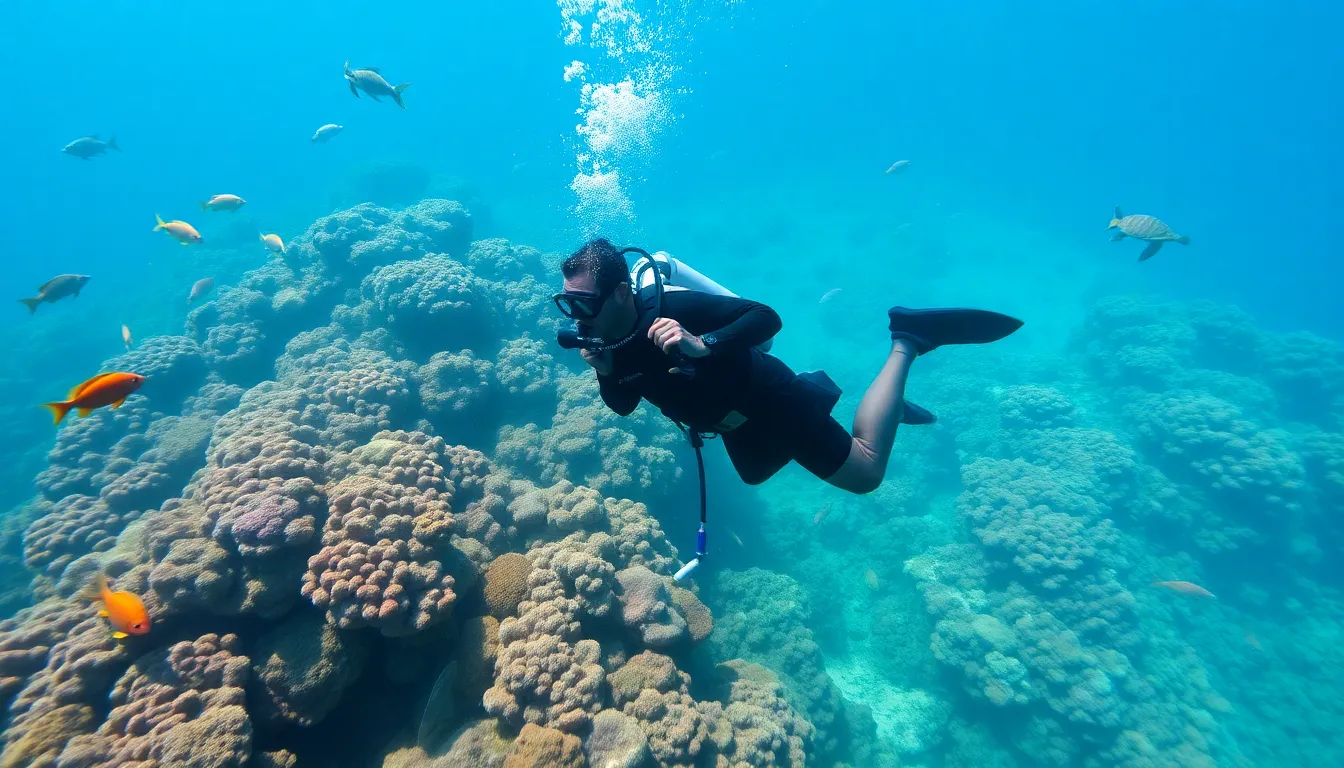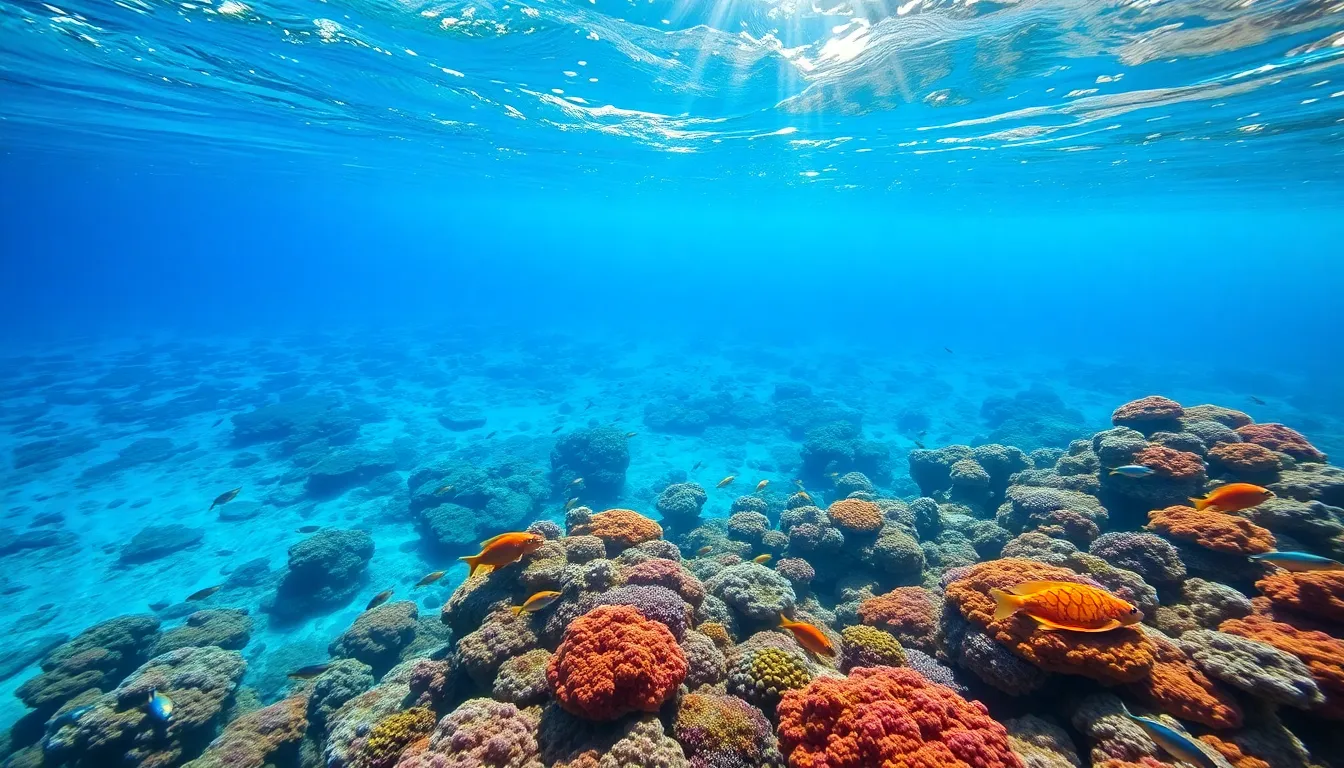Table of Contents
ToggleOceans cover over 70% of our planet, yet they often feel like the neglected middle child of the Earth family. While land gets all the love, our oceans are crying out for attention—and they’re not just being dramatic. From coral reefs that double as underwater cities to the mysterious depths where creatures glow in the dark, these vast blue wonders are essential to life as we know it.
Understanding Sustainable Oceans
Sustainable oceans refer to the management and conservation of ocean resources to ensure long-term health. These ecosystems thrive when human activities do not deplete marine life or damage habitats.
Definition of Sustainable Oceans
A sustainable ocean maintains the balance of ecosystems while supporting biodiversity. It involves practices that minimize pollution and overfishing. Conservation efforts focus on protecting marine habitats such as coral reefs and mangroves. Sustainable fishing practices, like catch limits or using less harmful gear, play a critical role. Awareness about chemicals and plastics used in industries updates stakeholders about their impacts on oceans. Together, these actions promote resilience in marine environments.
Importance of Ocean Sustainability
Ocean sustainability significantly affects global climate regulation. Oceans absorb over 25% of carbon emissions, playing a pivotal role in mitigating climate change. They also provide food for billions, with over 3 billion people relying on seafood as their primary protein source. Healthy oceans support tourism and recreation, contributing to local economies. Preserving marine ecosystems safeguards against natural disasters like tsunamis and storms. Protecting oceans ensures that future generations can enjoy these vital resources.
Current Challenges to Ocean Sustainability

Challenges to ocean sustainability significantly impact marine ecosystems. These issues require urgent attention to ensure the health of oceans and their resources.
Pollution and Waste
Pollution and waste represent major threats to oceans. Plastics, chemicals, and agricultural runoff suffocate marine habitats and alter water quality. Over 8 million tons of plastic enter the oceans each year, affecting wildlife and ecosystems. Toxic substances disrupt food chains, impacting both marine life and human health. Reducing pollution at its source becomes essential to preserve marine biodiversity. Implementing waste management strategies can minimize the release of harmful materials into the ocean.
Overfishing and Resource Depletion
Overfishing leads to drastic declines in fish populations and disrupts marine ecosystems. Approximately 34% of global fish stocks are overexploited, putting pressure on remaining species. Unsustainable fishing practices, including trawling and use of illegal nets, further exacerbate these issues. Protecting fish habitats and establishing marine protected areas can help regenerate depleted stocks. Community-based management practices promote sustainable fishing and ensure long-term resource availability.
Climate Change Effects
Climate change significantly affects ocean conditions, leading to rising sea levels and increased ocean temperatures. Ocean acidification, caused by absorbing carbon dioxide, threatens coral reefs and shellfish populations. Changes in sea temperatures disrupt marine migration patterns, affecting fish stocks and food chains. Adapting conservation strategies to mitigate climate impacts fosters resilience in marine ecosystems. Promoting global efforts to reduce carbon emissions remains critical for ocean health and sustainability.
Strategies for Promoting Sustainable Oceans
Effective strategies for promoting sustainable oceans rely on various approaches to combat contemporary challenges. Key methods include establishing marine protected areas, adopting sustainable fishing practices, and utilizing renewable energy resources.
Marine Protected Areas
Marine protected areas (MPAs) serve as safe havens for marine life. Approximately 7.6% of the world’s oceans are currently protected. These areas restrict activities like fishing and mining, enabling ecosystems to flourish. Research shows that MPAs can lead to a 20% increase in fish populations within their boundaries. Conservation efforts focus on maintaining biodiversity and allowing marine species to recover from overexploitation.
Sustainable Fishing Practices
Sustainable fishing practices safeguard ocean health while supporting fishermen’s livelihoods. Techniques, such as catch limits and selective gear, contribute to the responsible management of fisheries. Around 57% of global fish stocks are fished at maximum sustainable levels. Implementing these strategies mitigates overfishing and ensures that fish populations remain stable. Certification programs also promote responsible sourcing, encouraging consumers to choose sustainably caught seafood.
Renewable Energy and Resources
Utilizing renewable energy resources helps reduce dependence on fossil fuels. Ocean energy technologies, like tidal and wave energy, provide sustainable alternatives. These methods not only decrease greenhouse gas emissions but also harness the vast potential of ocean currents. Investing in renewable energy can lead to the creation of new jobs while protecting marine environments. Transitioning to cleaner energy sources plays a critical role in preserving the health of oceans for future generations.
Innovative Technologies Supporting Ocean Sustainability
Innovative technologies play a critical role in advancing ocean sustainability. These tools enhance monitoring, data collection, and material substitution efforts, driving positive change in marine environments.
Monitoring and Data Collection Tools
Advanced monitoring systems significantly improve understanding of ocean health. Satellite imagery captures vast ocean areas, offering insights into temperature changes and algal blooms. Drones enable researchers to survey hard-to-reach locations, tracking wildlife and assessing habitats. Additionally, underwater sensors gather real-time data on water quality, helping detect pollution sources. Automated data analysis tools synthesize large datasets efficiently, revealing patterns that inform management strategies. Utilizing these technologies fosters informed decision-making, essential for effective marine conservation.
Biodegradable Alternatives and Solutions
Biodegradable materials present effective solutions to ocean pollution. Innovative products, such as plant-based plastics, reduce reliance on traditional petrochemicals. This approach mitigates plastic waste in oceans, decreasing risks to marine life. Several companies actively produce alternatives like edible six-pack rings and compostable food packaging. These alternatives break down naturally, minimizing harm to ecosystems. Emphasizing awareness of these products encourages consumers to choose sustainable options. Consequently, adopting biodegradable solutions represents a critical shift toward cleaner oceans.
Case Studies of Sustainable Ocean Practices
Sustainable ocean practices are being demonstrated effectively across the globe. Various initiatives offer insights into how conservation and resource management can thrive in marine environments.
Successful Initiatives Worldwide
Costa Rica has set a benchmark for marine protection with its extensive network of marine protected areas (MPAs). These areas safeguard over 28% of its ocean territory, resulting in a reported 20% increase in fish populations. Similarly, the Great Barrier Reef in Australia has benefited from strict fishing regulations and coral restoration projects, improving coral resilience and supporting biodiversity. Iceland utilizes sustainable fishing quotas that protect fish stocks while allowing fisheries to thrive. Additionally, cities embracing coastal restoration programs, like New York’s Urban Waters initiative, enhance local ecosystems and community engagement.
Lessons Learned from Implementations
Successful initiatives provide valuable lessons for future ocean sustainability efforts. Collaboration among stakeholders, including governments, NGOs, and local communities, fosters effective management strategies. Engaging local fishermen in decision-making creates a sense of ownership, enhancing compliance with sustainable practices. Monitoring and adapting policies based on scientific research ensures programs remain relevant and effective. Furthermore, investing in education about sustainable practices raises awareness and promotes responsible consumer choices. By applying these lessons, new projects can replicate successes and mitigate challenges in ocean conservation.
The health of the oceans is a crucial component of a sustainable future. By prioritizing conservation efforts and embracing innovative practices, society can protect these vital ecosystems. Collaborative initiatives and community engagement are essential to fostering a culture of ocean stewardship.
As awareness grows about the challenges facing marine environments, individuals and organizations alike can take meaningful action. Supporting sustainable practices not only benefits the oceans but also enhances livelihoods and promotes biodiversity.
The journey toward sustainable oceans is ongoing, and every effort counts in preserving these essential resources for generations to come.





